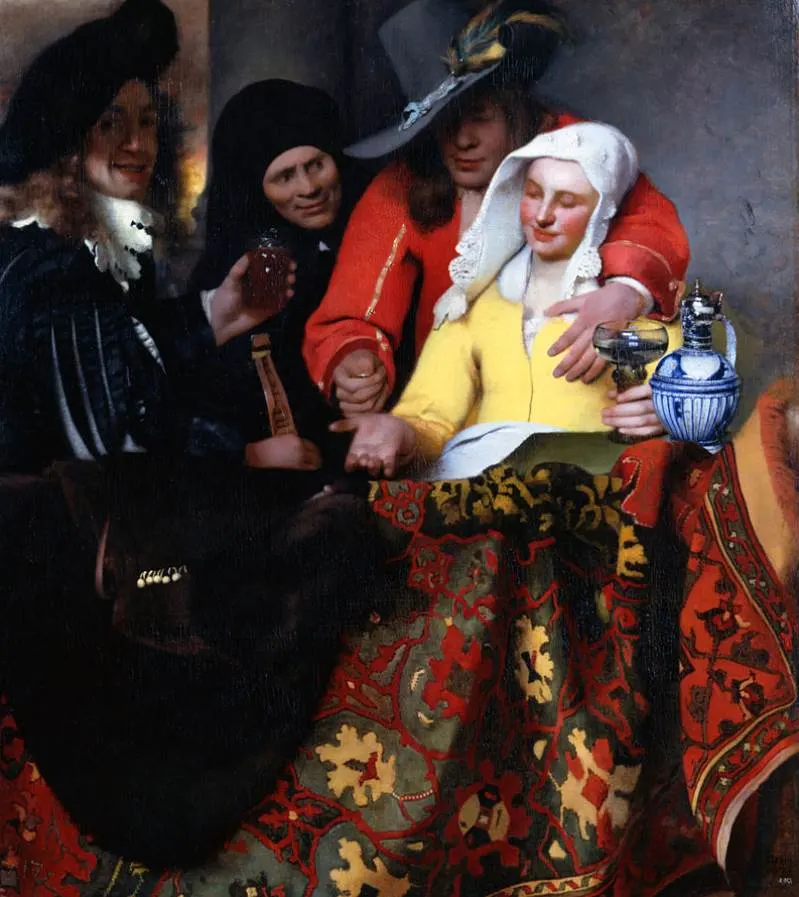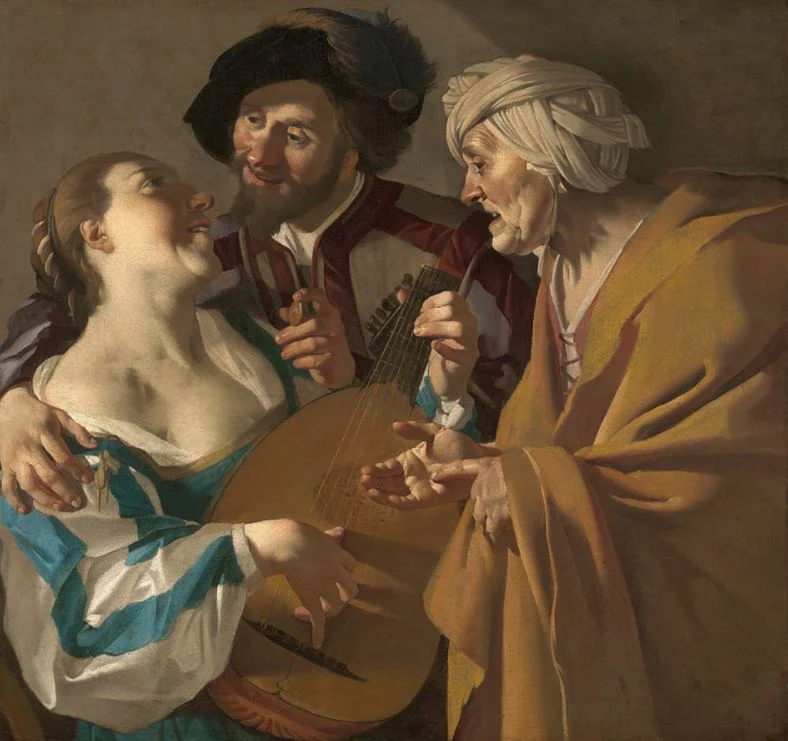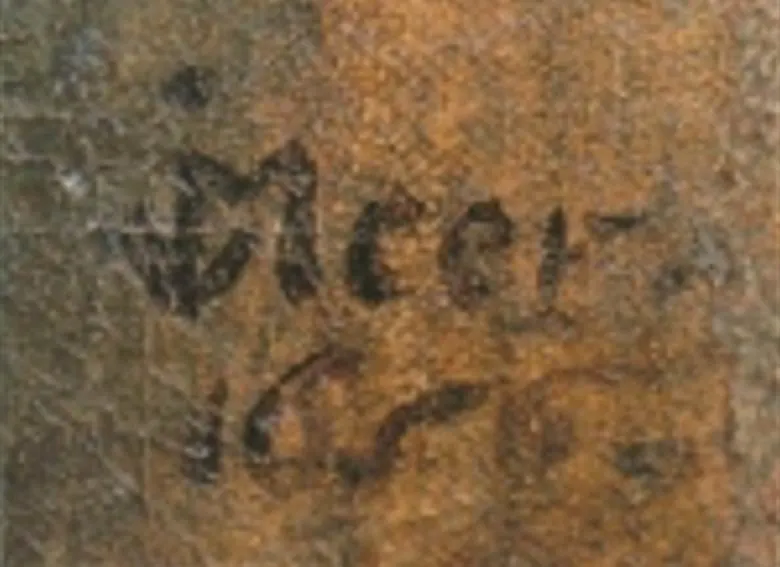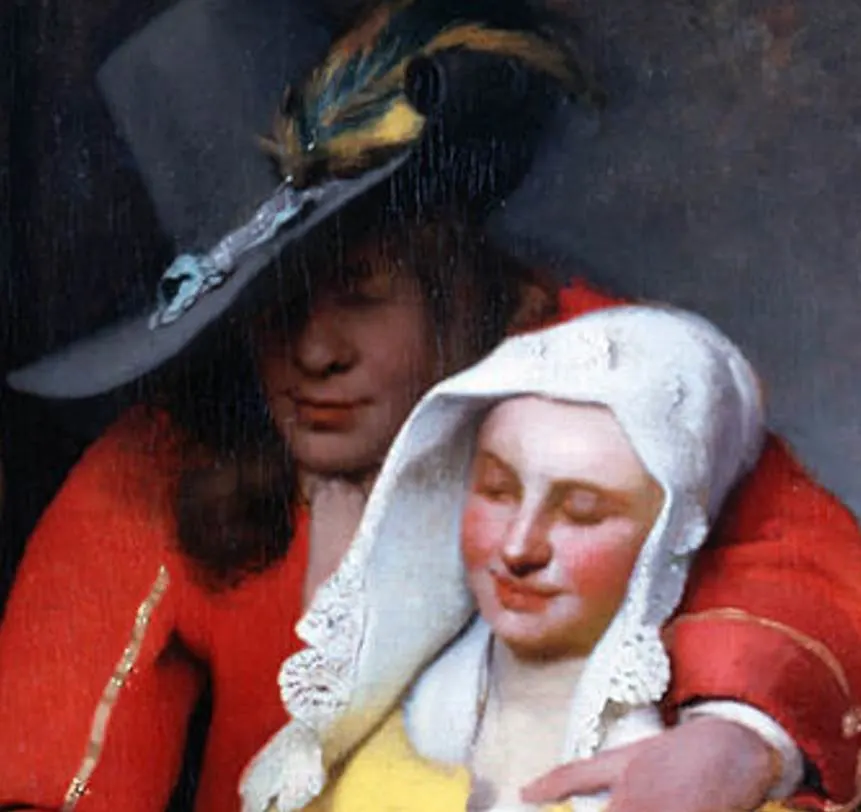We don’t know all that much about the training of Johannes Vermeer (1632-1675), one of the greatest Dutch artists of the 17th century.
His rather small oeuvre of delicate paintings was largely forgotten after the death of the Baroque artist. It was only rediscovered in the 19th century and features some of the most iconic paintings in art history.
In this article, you’ll discover some of the most interesting facts about The Procuress by Johannes Vermeer, a fascinating painting of the Baroque era.
1. It was painted when the artist was still in his early twenties
Johannes Vermeer was born in 1632 and lived his entire life in the city of Delft in what was then the Dutch Republic. His father was an art dealer and the young Vermeer took over this business when he passed away in 1652.
The little things we know about his early life all point to the fact that he exclusively devoted his time to his art. He got married to a Catholic woman named Catharina Bolenes in 1653 and the couple moved in with her wealthy mother named Maria Thins.
The artist produced The Procuress just a couple of years later in 1656, a time that he was only 24 years old.

2. It was probably inspired by a painting owned by his mother-in-law
The artist became a member of the Guild of Saint Luke in the Hague that year that he got married in 1653. This was the most common association of artists in cities all across Europe at the time.
Maria Thins, Vermeer’s mother-in-law, was a wealthy woman and owned a house large enough to accommodate the artist’s growing family. Most of his paintings depict rooms inside this house in Delft.
She also owned valuables that Vermeer often included in his works and paintings decorated the walls. One of these paintings was called “The Procuress” as well, a work by Dutch artist Dirck van Baburen completed in 1622.

It’s believed that the artist was inspired by this work to produce his version of this genre painting.

3. It’s 1 of only 3 paintings by the artist that was signed and dated
One of the main reasons why the oeuvre of Vermeer wasn’t rediscovered until the 19th century was because he rarely signed and signed his paintings. This also results in most dates of Vermeer paintings being estimates.
It was French art critic Théophile Thoré-Bürger (1807-1869) who first published the complete oeuvre of the artist in the Gazette des Beaux-Arts in 1866 after years of extensive research.
The Procuress is only 1 of 3 paintings that the artist both signed and dated. The other two are The Astronomer (1668) and The Geographer (1669).

4. It’s an atypical Vermeer painting for a particular reason
The vast majority of Vermeer’s paintings depict people, often women, doing ordinary chores inside his own house. Better yet, many of these were painted in the same room.
This also meant that the light source of most of his paintings comes from the left. He was a master of using excellent light effects which were in contrast with the exaggerated effects in Caravaggio’s works which heavily influenced many Dutch artists at the time.
This painting is rather gloomy and doesn’t appear to have a distinctive light source as in his other works. The scene may take place in a partially enclosed room inside a brothel.
Despite being an atypical Vermeer painting, the artist did already show his mastery of realistically depicting objects. The Oriental-style rug in the foreground, the glass held by the woman, and the piece of Westerwald Pottery are great examples of this.

5. Did the artist use his family members as models for this work?
The painting was sold in an auction in Amsterdam in the year 1696, over 20 years after the artist passed away. It was referred to as “A Merry Company in a Room,” a title that doesn’t make us much wiser.
An unverified claim suggests that the artist used some of his family members as models for this painting, including his wife Catharina as the woman and her brother Willem who offers her a coin.
If this theory is correct, it probably means that there is no deeper meaning to the painting, and “A Merry Company in a Room” is probably an accurate description of what we see.

6. It’s likely that the artist included a self-portrait
One of the most fascinating facts about The Procuress by Johannes Vermeer is that the artist most probably painted himself in this work as well. He is believed to be the man standing on the left.
What makes this even more remarkable is that it’s the only extant self-portrait of the artist in which we can see his face. It’s also assumed that he included himself in his famous work called “The Art of Painting” (1666-1668) but in this work, his back faces the viewer.
The man wears a black beret and a doublet, a popular clothing item in Spain at the time.

7. How big is The Procuress by Johannes Vermeer?
Vermeer painted slowly and was extremely focused on details. This didn’t allow him to create monumental works of art. His largest painting is called “Christ in the House of Martha and Mary” and has dimensions of 160 × 142 centimeters (63 × 56 inches).
The Procuress is the second-largest painting in the oeuvre of Vermeer and has dimensions of 143 × 130 centimeters (56 × 51 inches).
8. Where is the painting located today?
The painting was sold at an auction in Amsterdam in 1696 and made its way to the Waldstein collection in 1737. It briefly hung at the Duchcov Chateau in the modern-day Czech Republic until it was acquired by Elector of Saxony, August III in 1741.
It was confiscated by the Soviet Union in 1945 as a spoil of war but was returned to Dresden in 1955.
Today, it’s one of the ultimate masterpieces of Old Masters at the Gemäldegalerie Alte Meister, the most popular museum in this city in the eastern part of Germany.

